How mutton flaps are killing Tonga
- Published
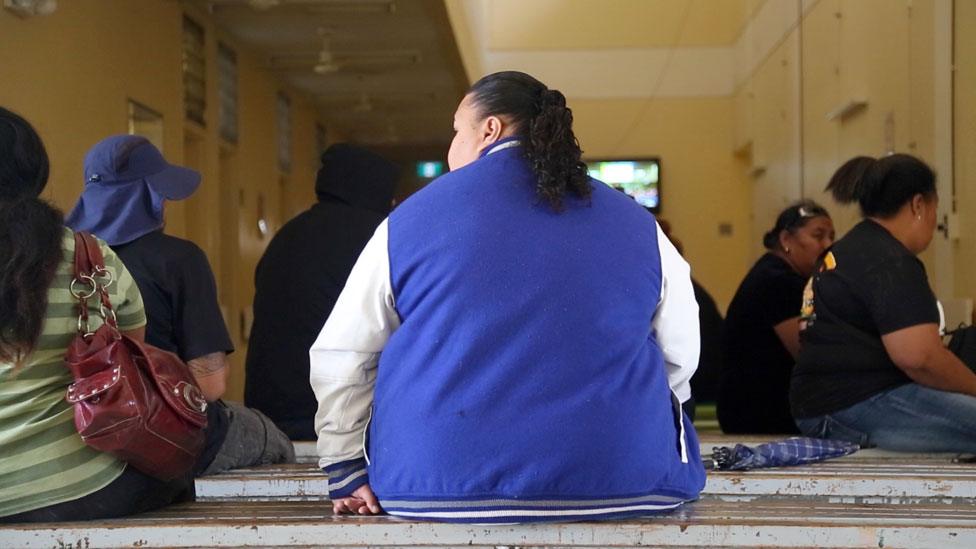
The Pacific island of Tonga is the most obese country in the world. Up to 40% of the population is thought to have type 2 diabetes and life expectancy is falling. One of the main causes is a cheap, fatty kind of meat - mutton flaps - imported from New Zealand.
With a stern expression crossing her face, 82-year-old Papiloa Bloomfield Foliaki almost leaps from her seat to show us something she says will help us understand.
She comes back into the sitting room of her small hotel in Nuku A'Lofa, Tonga's capital, brandishing a large model of an ancient wooden boat.
"We Tongans rowed here, across thousands and thousands of miles of sea, in boats like these. Then we flipped them over and used the old boats as houses."
She frowns. "But, nobody wants Tongan houses any more, because something Western, something modern, people think is better, people associated Tongan style of homes with poverty.
"Just like with our food."
The traditional Tongan diet is fish, root vegetables and coconuts, as you might expect for a palm-fringed island in the middle of the Pacific.
But at some point in the middle of the 20th Century, offcuts of meat began arriving in the Pacific islands - including turkey tails from the US and mutton flaps from New Zealand.
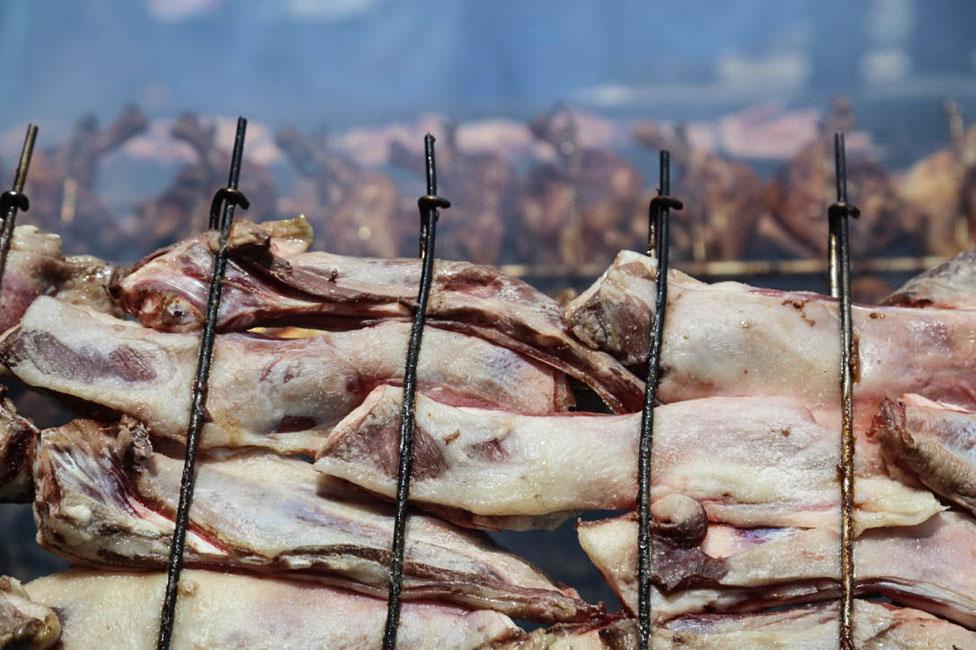
They were cheap and became hugely popular.
"People think something imported is superior," says Foliaki, a former nurse, activist and politician, who now works in the hotel business, despite being one of few Tongans over the age of 80.
"And you have a situation where fishermen spear their fish - sell it - and go and buy mutton flaps. People don't have the education to know what is bad for their health."

What are mutton flaps?

The low-quality end of a sheep's rib - connected to the high-quality ribs and spare ribs - also known as breast
Every 100g includes approximately 40g fat (half of it saturated fat) and contains 420 calories
Flaps make up 9-12% of a sheep's carcass by weight, but only 3-5 % by value
In the Pacific, they are sometimes the only cut of the animal found on sale
New Zealand and Australia sell large quantities of mutton flaps to China, Mexico and African countries
In Europe they are used in doner kebabs
Source: Deborah Gewertz and Frederick Errington, authors of Flap Food Nations in the Pacific Islands

In 1973, 7% of the population were suffering from non-communicable disease - a phrase that has come to be used as synonymous with diabetes in Tonga. By 2004 the figure was 18%. It is now 34% according to the Tongan Health Ministry, though some think the figure could be as high as 40%, external.
"There's this whole generation in Tonga that was brought up on mutton flaps," says Sunia Soakai, a health planning officer for the Secretariat of the Pacific Community.
"Mutton flaps are the discarded parts of the lamb that are not fit for consumption in New Zealand. They were able to dump this stuff on the Pacific countries."
Tongan fishermen still catch fish by spear, mostly at night, returning well before dawn.
Customers who want the best of the catch come down to meet them off the boat. Others can turn up at the little fish market in the port's car park later in the morning.
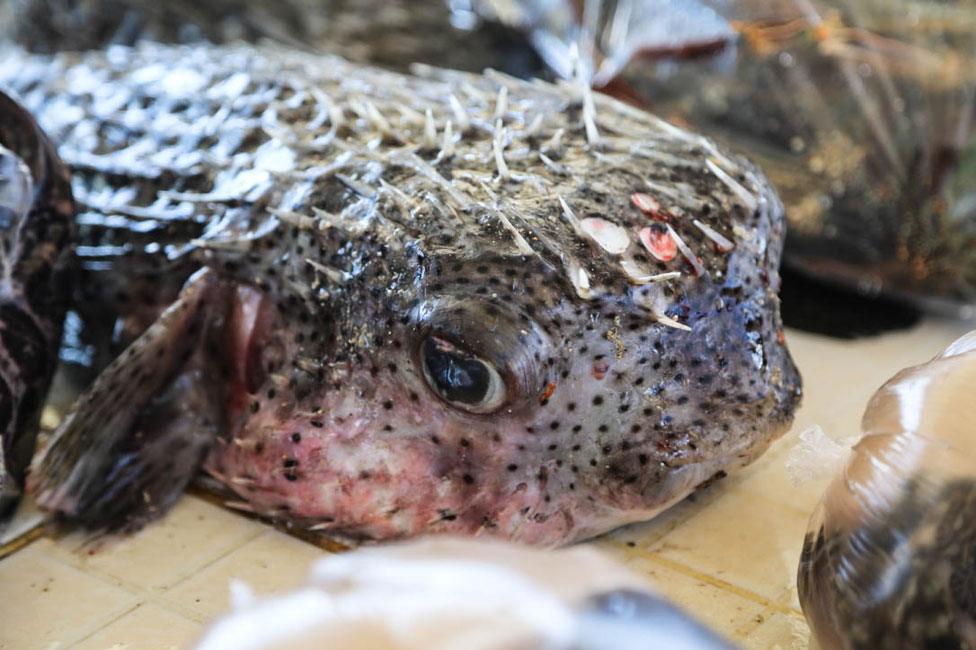

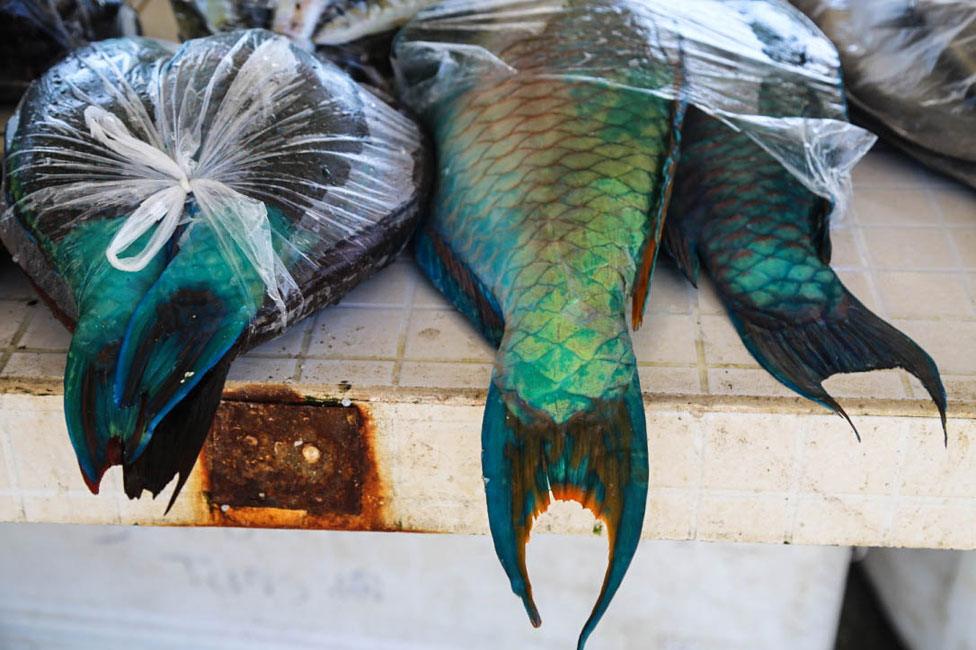
But when we visited, there were few customers. Hand-speared fish is not cheap, and it's only foreign boats that trawl with nets, for a catch that is immediately exported. Some of the hand-caught fish is also sent abroad - there is demand in Hawaii for Tongan speared snapper.
But even here at the fish market the smell of barbecued meat wafts across the car park. About 50m away, dozens of spits are rotating half-chickens and mutton flaps - from a distance the flaps looks like slabs of unsliced bacon, more fat than meat. The singeing fat gives off a powerful, pungent odour.
According to Soakai, it's not unusual for a Tongan to eat 1kg of mutton flaps in one sitting. He did so himself in days gone by.
"Over the years, I got quite big, I probably tipped the scales at 170kg (375lb, 26st 11lb)," he says.
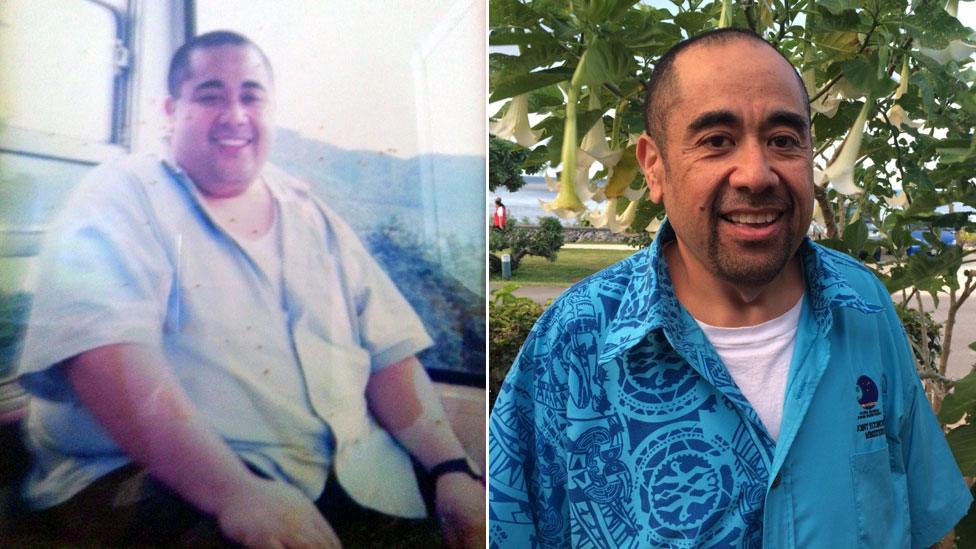
But Soakai eventually changed his ways and shed about 70kg - for three reasons.
"I have a five-year-old son," he explains. "If I continued my lifestyle I would orphan my son. The second trigger was that I work in the health sector; it became an issue of credibility. And the third - I was diagnosed with diabetes."
Some scientists believe Tonga's problem is partly down to genetics - that Pacific islanders in the past had to survive long periods without food so their bodies are programmed to cling on to fats.

Find out more

What lies behind the global epidemic in diabetes? Stories from Sri Lanka, Mexico and the US - listen to and download the programmes
The Food Chain will host a live debate about diabetes on 5 February - tweet your questions to @BBCWorldService using the hashtag #BBCdiabetes

But there's no question the role that society plays here.
"The bigger you are, that's beauty," says Drew Havea, chair of the civil Society Forum of Tonga.
Size and status in Tonga have often gone together. The Tongan King Tupou IV, who died in 2006, holds the Guinness record for being the heaviest-ever monarch - 200kg (33 stone, or 440lbs). Being thin would traditionally have indicated a position lower in the social pecking order.
"We need to learn that if you are skinny you are not hungry," says Havea.
In his later years, the king lost some weight, and was photographed exercising, in an attempt to show Tongans how to improve their health.
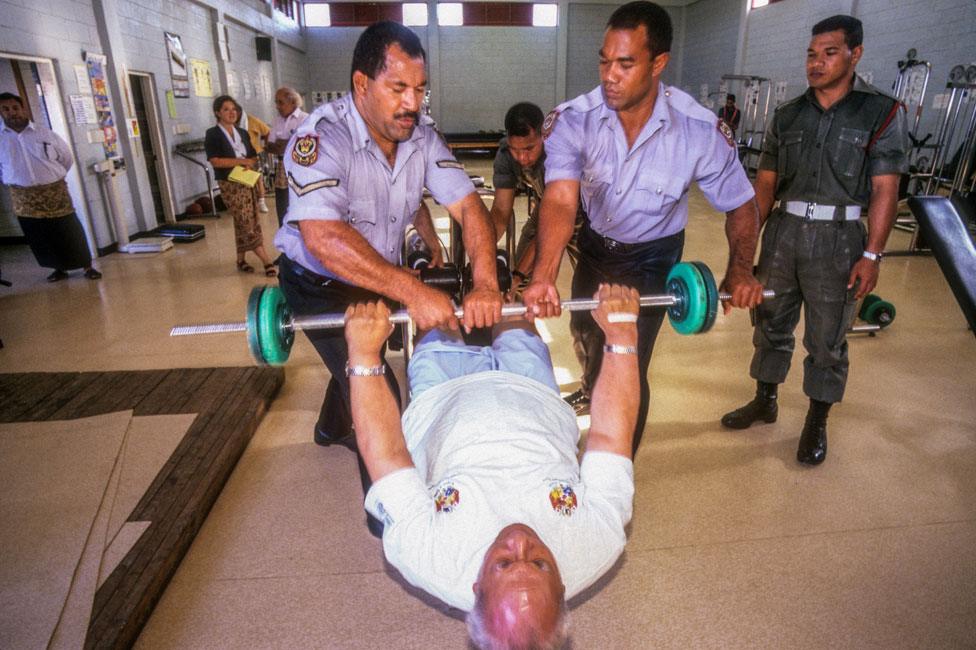
There is also a tradition of feasting, which to an outsider almost resembles competitive eating.
"Good food, in a Tongan sense, is lots of food," says the Rev Dr Ma'afu Palu, a minister who is making it his mission to preach healthier eating.
He's among many who criticise church leaders for failing to set a good example to their parishioners. Ministers are authority figures in this deeply religious society and according to Palu, 85% of them are obese, thanks partly to the regular feasts they take part in.
The obesity epidemic is not solely down to mutton flaps and turkey tails. Lots of fatty canned meat is consumed - sometimes from giant 2.7kg (96oz) tins.
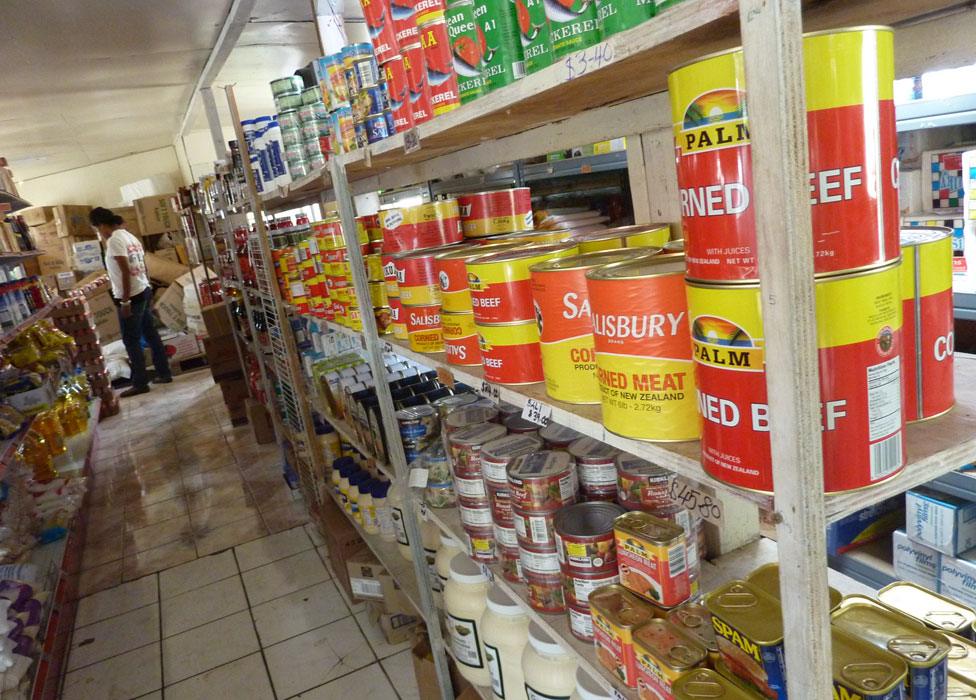
And then there are fizzy drinks.
"You have to understand that in Tonga we are catching up," says Lepaola Vaea, deputy Chief Executive at the Ministry of Revenue and Customs.
"We used to watch American movies and TV shows and everyone was drinking soda. We sat there and thought, 'Wow, I would love to drink soda and we're poor because we're drinking water.' But now everyone's drinking water and we are drinking soda!"
In 2008, Vaea tried to raise duty on mutton flaps, as Fiji has successfully done.
The result: "There was a large public outcry," she says.
"People are addicted."
It says a lot about Tongan eating habits that a healthfood restaurant here serves fish and chips. But this really is healthier than a lot of Tongan dinners.
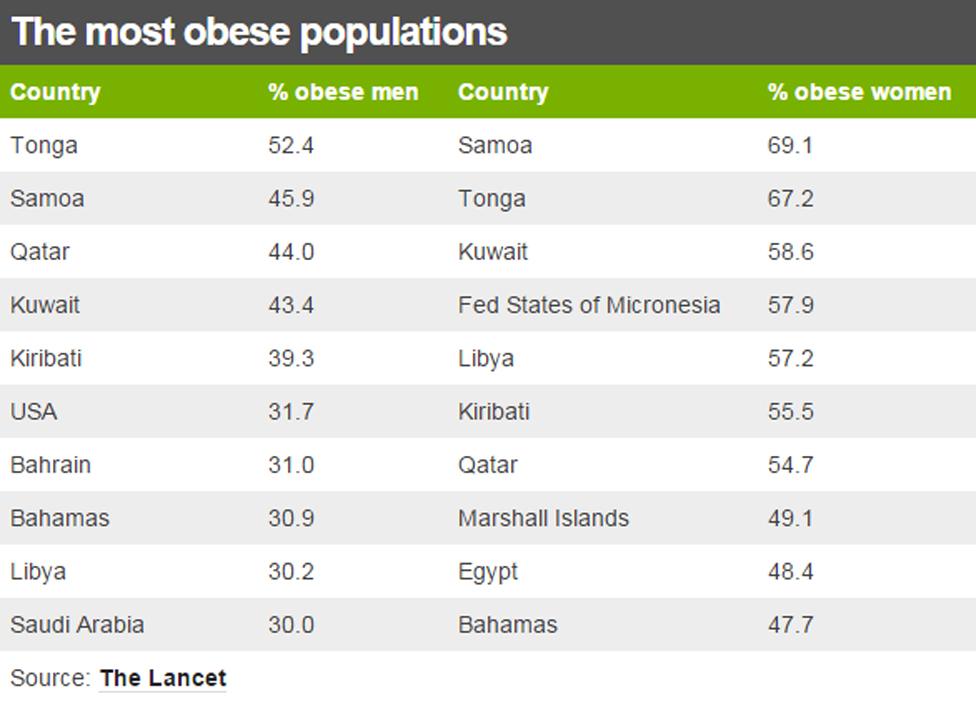
The country of 100,000 struggles to cope with the consequences of this diet.
Life expectancy, which was once in the mid-70s, has fallen to 64.
One doctor at the National Diabetes Centre looked at the queues outside her clinic and told us, "I always feel like I'm drowning."
From the hospital we went to visit a family where the whole family - husband and wife, three daughters and the husband's mother - all have type 2 diabetes.
One of the girls got sick at 14 and for nearly four years a wound on her leg failed to heal. Eventually she had the leg amputated, and this year received a prosthetic leg from the Mormon church.
Despite government efforts to make people more aware of the risks of diabetes and obesity, there is still a long way to go. Many of the islanders still do not yet appear to be changing their lifestyle or diet.
Curbing diabetes will take generations, one doctor assured us, and things will get worse before they get better.

Watch Katy Watson's TV report from Tonga
The BBC's Katy Watson reports on the cause of Tonga's obesity crisis
Subscribe to the BBC News Magazine's email newsletter to get articles sent to your inbox.